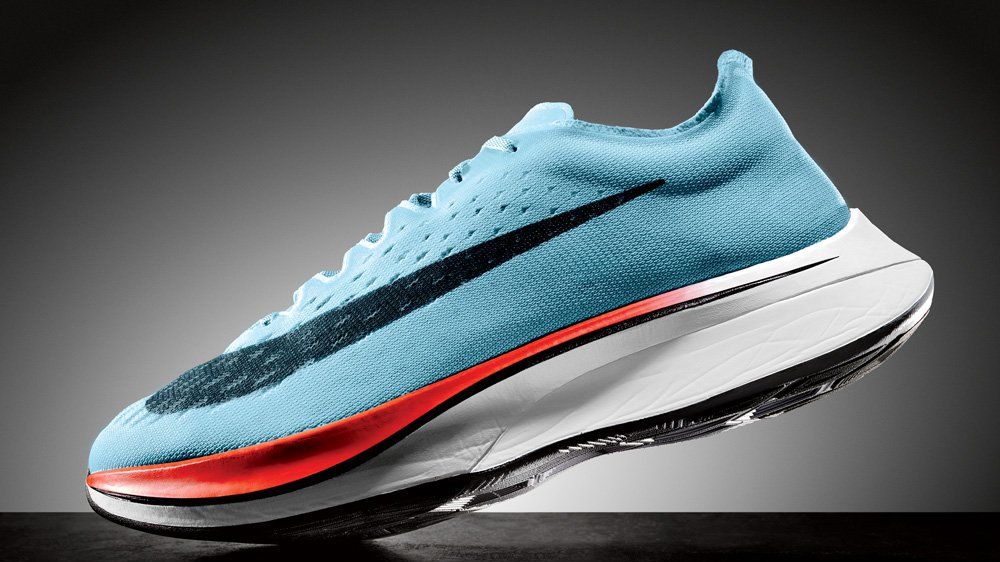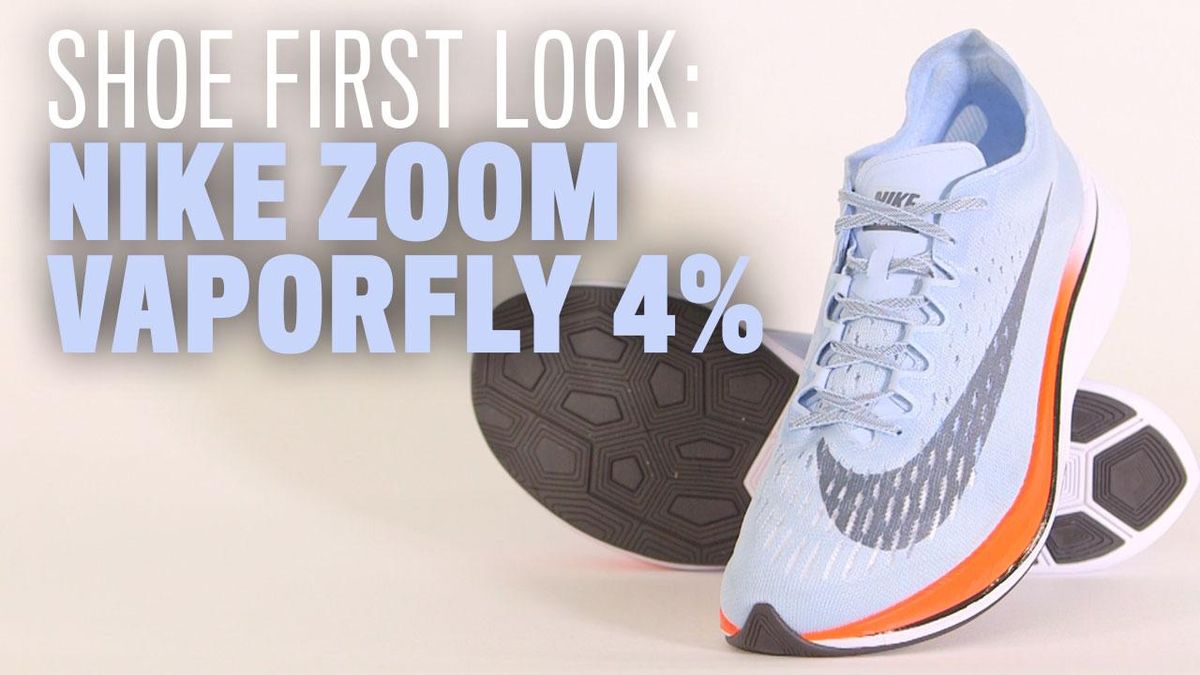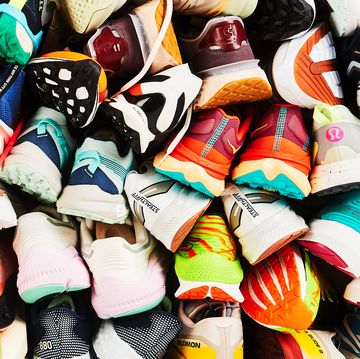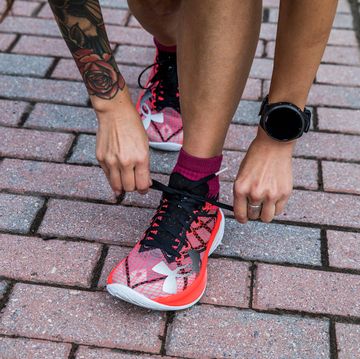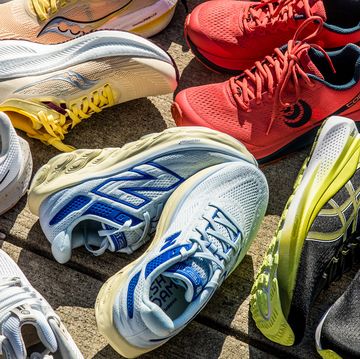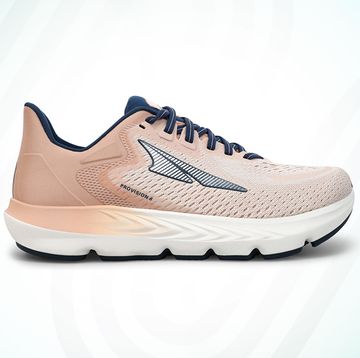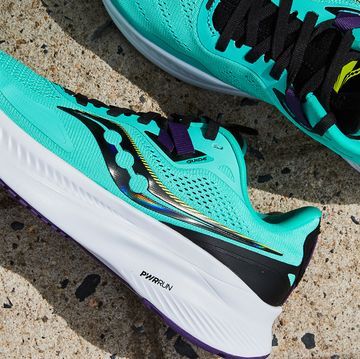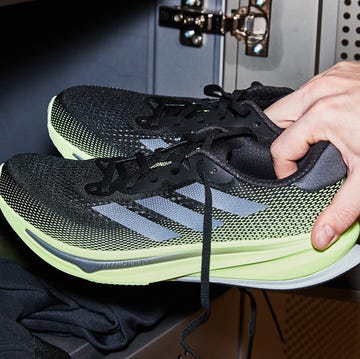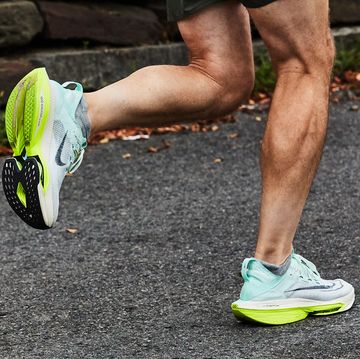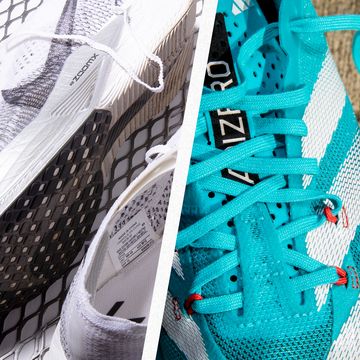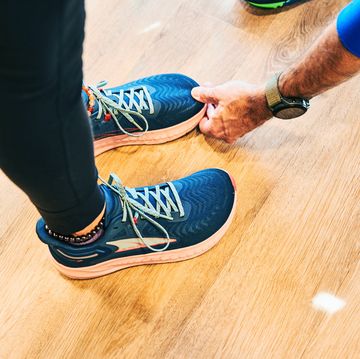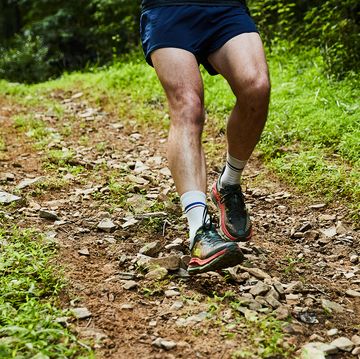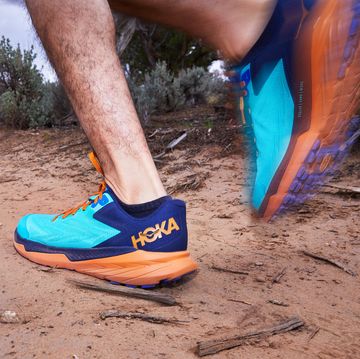When Nike embarked on a bold plan to break two hours in the marathon, the company put its vast resources toward training three super-stud runners, pinpointing a perfect course with ideal conditions, and, of course, developing finely tuned footwear with innovative new technologies. The completely custom footwear (called Zoom Vaporfly Elite) unveiled for the sub-two attempt this spring reignited debate over whether a shoe can give a runner an unfair advantage.
Will it? The jury is still out, but the company is applying some of the R&D from its elite “concept car” shoes into two mass-market models, so you can chase a faster performance of your own. Using lightweight, resilient foam and a stiff carbon-fiber plate, the Zoom Vaporfly 4% ($250) is designed to get you from start to finish using less energy. (A second consumer model, the Zoom Fly, with a different foam and carbon-infused nylon plate, will cost $150.) At the Runner’s World Shoe Lab, we tested the Zoom Vaporfly 4% on a former NCAA Division 1 runner who made nationals in the 10,000 meters, at speeds up to 2:17 marathon pace. Here’s what we found.
SUB-2: A Primer on Nike’s quest for 1:59:59
Lightweight Upper
A thin layer of engineered mesh helps keep weight down (a men’s size 10 weighs only 6.9 ounces). It lacks typical reinforcements like overlays and a heel counter, relying instead on thinly padded patches and sueded materials inside to secure the foot to the soft platform.
Stiff Plate
Sandwiched in the midsole foam is an extremely stiff carbon-fiber plate that runs from heel to toe. Critics argue it may provide a spring-like effect and should be illegal for use in competition. But carbon-fiber plates have been used in running shoes for decades to provide stiffness. Our lab testing shows this plate extends pushoff through the tips of the toes, restricting how much the toes can bend—a common cause of energy loss. The plate is curved to compensate for this stiffness and to give a smooth ride.
RELATED: An Inside Look at Nike’s Sub-2-Hour Marathon Quest
Ventilation
To run fast, you have to stay cool. The mesh upper is studded with large holes over the toes and along the side of the shoe to effectively dump heat.
New Shoe Finder Tool: Discover Your Perfect Pair
High Profile
Counterintuitively, there’s a lot of foam underfoot for a racing shoe. The stack heights (a measure of all materials between your foot and the road) are 35.7 millimeters in the heel and 24.8mm in the forefoot, on par with heavier daily training shoes. The forefoot cushioning is excellent, but the heel dampens impact better than any shoe we’ve tested in the lab. This outstanding combination of thick cushioning and high energy return lets the runner sink deep into the foam without penalty. The 11mm drop from heel to toe minimizes stress on the Achilles and gives a sensation of falling forward at fast paces.
Pointed Heel
The tapered heel that comes to a sharp point screams “fast,” and Nike claims it makes the shoe more aerodynamic by reducing drag, the turbulent wake behind an object as air passes it. However, peak drag when running occurs while the toes are pointed down and air flows over the top surface of the upper. Although it looks sporty, we found that the heel has minimal performance benefit.
Springy Foam
A key to the shoe’s speed lies in a new lightweight foam called ZoomX. In our lab testing, the shoe delivered 80 percent energy return in the heel and 77 percent at the forefoot—the highest values ever recorded in our lab. Our runner experienced an average of 4 percent less muscle activity in the quadriceps, gastrocnemius (calf), and tibialis anterior (shin) muscles, consistent with Nike’s energy-savings claims. His heart rate (172 bpm) was also lower than when wearing two control models (180 bpm), indicating less effort required to maintain a consistent pace.
RELATED: How to Watch Saturday’s Sub-2 Marathon Attempt
Jeff is Runner-in-Chief for Runner's World, guiding the brand's shoes and gear coverage. A true shoe dog, he's spent more than a decade testing and reviewing shoes. In 2017, he ran in 285 different pairs of shoes, including a streak of 257 days wearing a different model.
